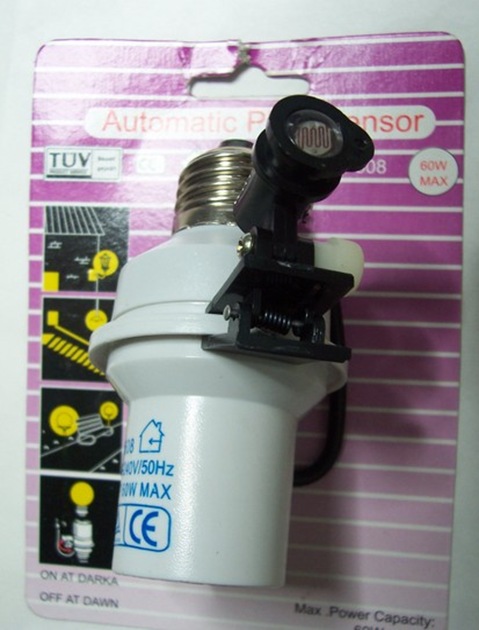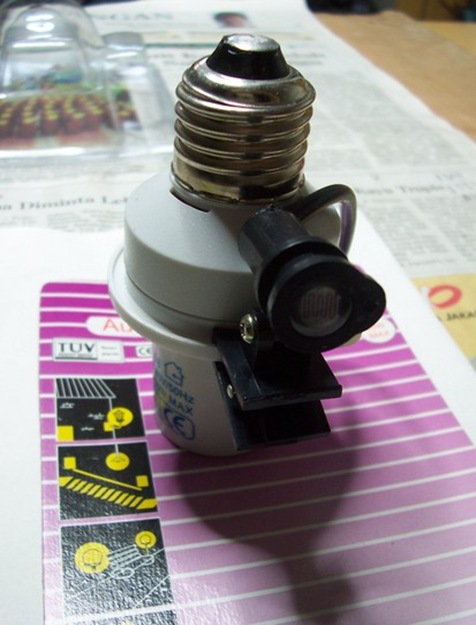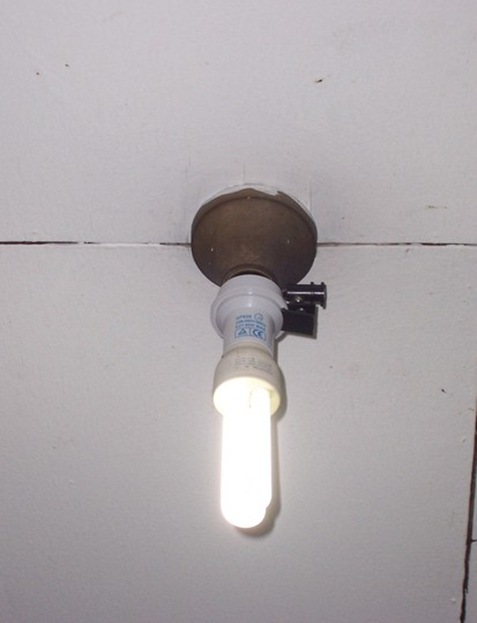Several weeks ago I installed 2 (two) automatic switch lamp holders for the two lamp fittings at the front of my house. They cost me around Rp 25,000 a piece and are made in china (again?). I cannot find the brand on its casing but I know it is quite a good product which I usually get from my local supplier.

Why did I install this kind of stuff? Well, first of all, I like to try new interesting product which may benefit you especially concerning energy saving or the kinds :-) Furthermore, this automatic switch will switch on your bulb automatically if there is no sufficient ambient light, ie: at dusk or night, and it will swicth off your bulb automatically if there is enough ambient light, ie: at dawn or daylight. The photosensor is an LDR (Light Dependent Resistor) or photoresistor with a kind of lense in front of it. The resistance value of LDR decreases with increasing incident light intensity.

Here is an excerpt from Wikipedia about LDR made from cadmium sulfide cells:
"Cadmium sulfide (CdS) cells rely on the material's ability to vary its resistance according to the amount of light striking the cell. The more light that strikes the cell, the lower the resistance. Although not accurate, even a simple CdS cell can have a wide range of resistance from less than 100 Ω in bright light to in excess of 10 MΩ in darkness. Many commercially available CdS cells have a peak sensitivity in the region of 500nm - 600nm (green light). The cells are also capable of reacting to a broad range of frequencies, including infrared (IR), visible light, and ultraviolet (UV). They are often found on street lights as automatic on/off switches. They were once even used in heat-seeking missiles to sense for targets. Standard cadmium based LDRs have a frequency response that varies according to light level, but typical fall times range from 15ms to 25ms and typical rise times range from 50ms to 70ms, so they may be unsuitable for data links and picture scanning. Silicon based photodiodes and phototransistors are orders of magnitude faster. Probably the best known LDR is the ORP12. Smaller cheaper devices are more popular today."

You can leave your house whole day and night, and the automatic switch will take care of your home lightings, when to turn it on or off. The installation is very very simple. It is put between normal lamp fitting and the bulb. For detail, please see the pictures. Screw in the automatic switch on to the fitting till it is fixed. Then screw in the bulb on to the automatic switch lamp fitting. You may change the positon of the clip-on photosensor in order to adjust its sensitivity. In my case, I adjust the photosensor lense to face straight to the front of the house in order to get the exposed dayight from the sun. It can accept power till 60W as stated in the casing but I suggest half of the power rating will be much safer (due to made in china?), ie: 30W. Anyway, any energy saving lamps I use are less than 25W so that it is no problem at all.

So far, it seems the automatic switch works well. And furthermore, it just costs me around USD2.5 for a wonderful switch. I hope it will stand quite a long time before the sensitivity becomes worse. Let's see...



0 comments:
Post a Comment